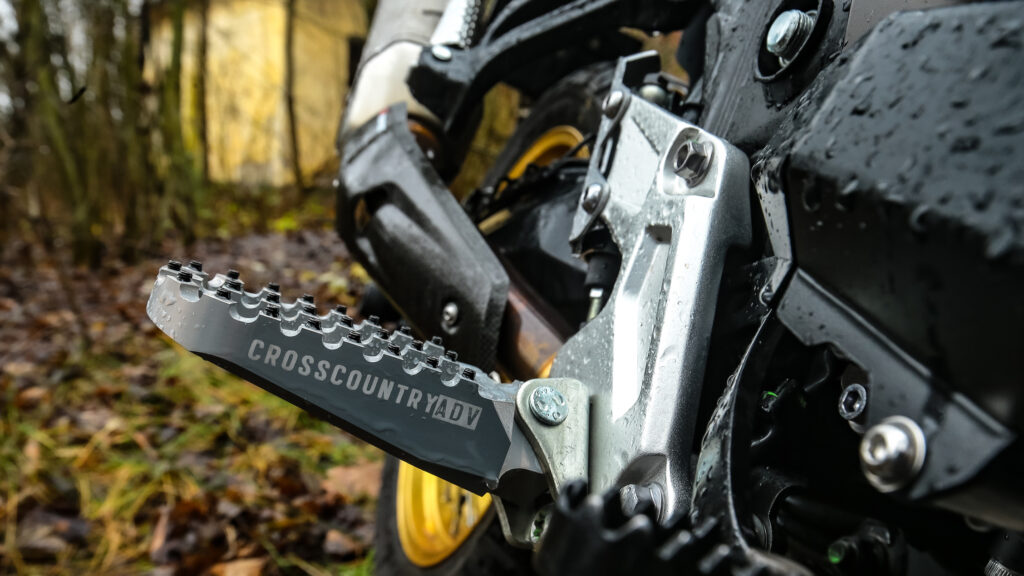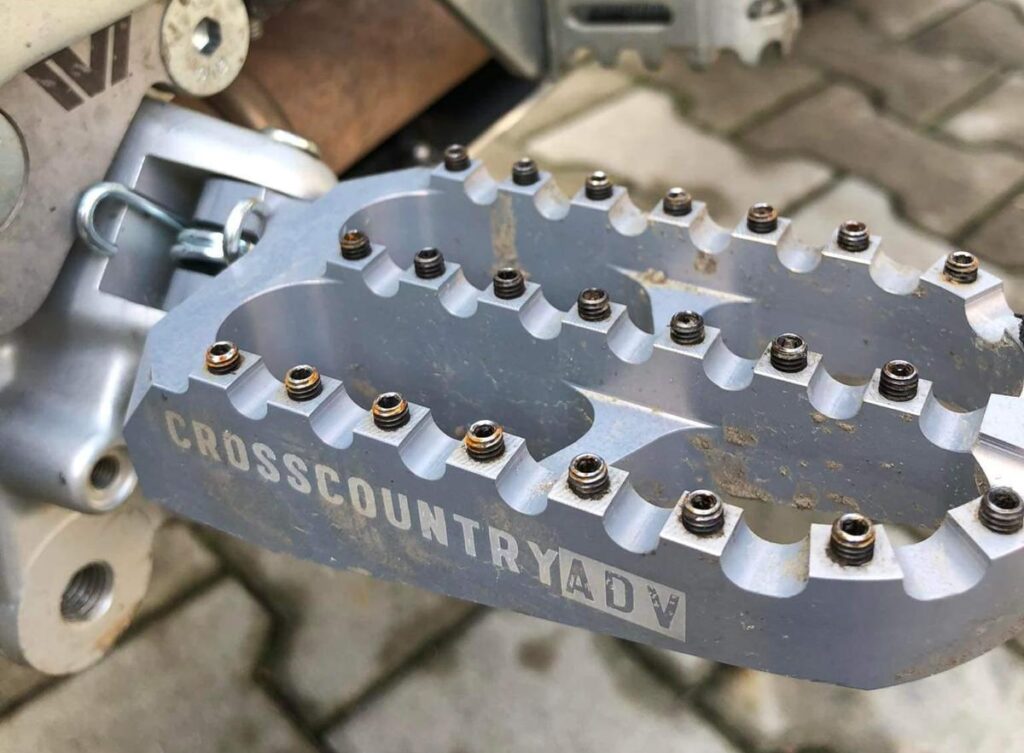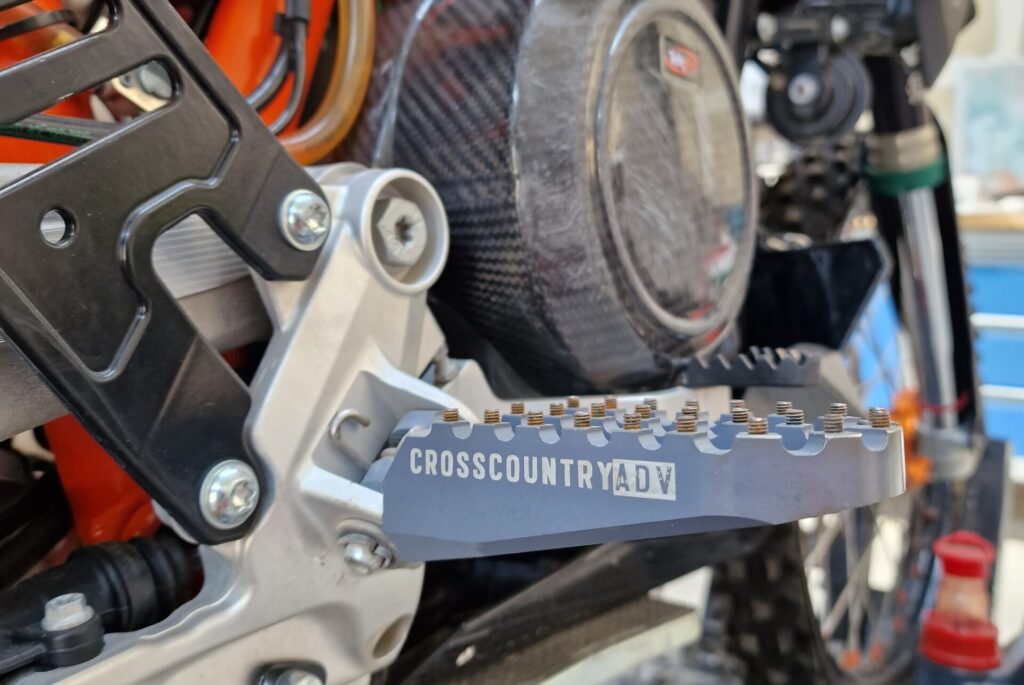Uncategorized
Decoding Rally Footpeg Rust: Why It’s Not a Concern
Noticed rally footpeg rust? We hear you! However, while the sight of rust might set off alarms, there’s a lot more to the story than meets the eye.
Let’s uncover why the presence of rust on rally footpegs isn’t something to fret over.
Understanding Rally Footpegs
Rally footpegs are essential for off-road riding, rally racing, and just about everything in between. They provide the much-needed grip and stability that’s vital when navigating challenging terrains. To achieve this, these footpegs sport a series of studs strategically placed to offer optimal contact with your boots.
The Material Behind the Rally Footpeg Rust
Central to this discussion is the material used for the rally footpeg studs – CrMo4. This stands for Chromium-Molybdenum steel, a sturdy and durable alloy that’s frequently used in high-stress environments. The studs are then treated with a chemical browning process and a protective oil coating. This treatment ensures that the footpeg studs are inherently resistant to rust formation, making them perfectly suited for the diverse conditions riders encounter.

The Rust Enigma
Now, let’s address the elephant in the room – the appearance of rust on these well-engineered studs. After a few rides, particularly in wet or muddy conditions, the thin protective layer formed by the chemical browning and oil treatment can wear off. This might lead to the emergence of a slight rust coating on the studs’ surface. But before you jump to conclusions, take a deep breath – this is absolutely normal.

Why Not Stainless Steel?
You might wonder, why not use stainless steel studs instead? After all, stainless steel is known for its rust-resistant properties.
The answer lies in the strength and durability of the rally footpeg studs. In a small (M4) size, stainless steel would be significantly weaker compared to CrMo4. These studs would wear down much faster. Additionally, a stainless-steel stud might get damaged during the installation process as it’s are inserted into the footpeg and driven in with 9Nm of torque. Even if it survived the installation, there would still be a big risk that removing the stud would be impossible, so if you needed to replace damaged or worn studs, you simply couldn’t do it.
During the rally footpegs development stage, we conducted heaps of research before deciding on the CrMo4 studs: they provide excellent grip (almost the same as titanium teeth), but they won’t tear up your boots. Even when the studs start to wear, they will still provide the same grip because of the outer thread on the studs: each stud is spiral-shaped, so even with wear, it will not have a flat or rounded shape and will retain the same grip preventing your feet from slipping.
The shape of the studs is the reason why they’re better than cone-shaped or peaky studs. Pointy studs will eventually lose their shape and grip, whereas the studs of our rally footpegs will retain the shape and grip even with wear.
The only exception is titanium footpegs which remain sharp far longer than steel. However, titanium studs or screws are a sharp weapon on your bike – they’re not made for ADV or rally riding.
Finally, while we can galvanize the CrMo4 studs, that’s only a coating. Although the galvanized coating will remain on the studs a bit longer, it will eventually wear off, and small amounts of rust may appear, much like on chemically browned studs.

Nature’s Interaction with Machinery
As motorcyclists, we’re well acquainted with the dance between our beloved machines and the elements. Rain, mud, dirt – they’re all part and parcel of the off-road experience. When you ride, especially in challenging conditions, you’re exposing your equipment to the elements. This interaction between the environment and machinery can lead to some superficial rust formation, and rally footpeg studs are no exception.
It’s important to acknowledge that this rust isn’t a sign of a product defect or subpar quality. In fact, it’s an indicator that your footpegs are being used as they’re meant to be. The rust on these studs is transient, a natural consequence of the elements. Moreover, it’s not something that needs your immediate attention.
Just think of your chain and sprockets: even if they have a coating (whether it’s paint or anodization/galvanization), as you use them and wash them, they will inevitably get rusty if you’re not oiling and lubing them. Just like us, chain and sprocket manufacturers don’t use stainless/inox material, because they are weaker and less durable.
The Riding Solution
Now, let’s get to the exciting part – riding. The very act of using your footpegs during your off-road adventures serves as a remedy for this temporary rust. As you ride and your boots engage with the footpeg studs, this light rust layer is gently and effectively removed. In essence, the motion of riding acts as a natural cleaning mechanism, ridding the studs of this minor rust residue.

Conclusion: Embrace the Rally Footpeg Rust
In conclusion, rust on rally footpegs is a passing phenomenon that speaks volumes about their functionality. It’s a testament to the challenging terrains you’re conquering and the trusty machine you’re using. So, next time you spot a bit of rust on your footpeg studs, embrace it – it’s a mark of your adventures and a sign of your off-road journey! And remember: as you set out on another ride, that rust will be whisked away by the very act of riding.
